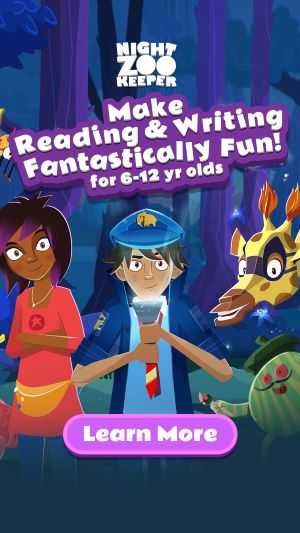Grade 3 Reading Comprehension
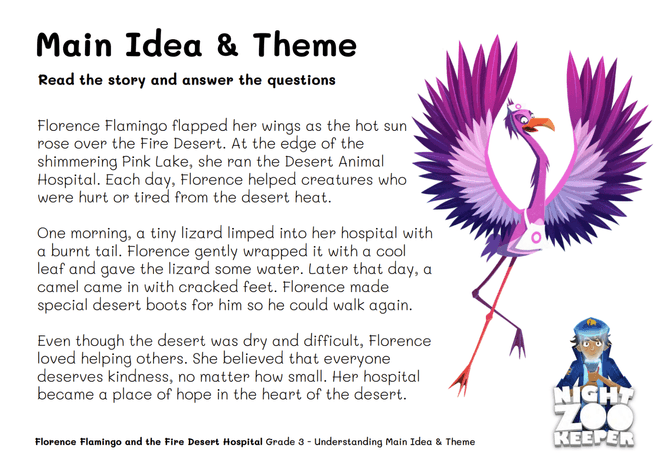
Home > Resources & Worksheets > Reading Comprehension > Grade 3
Grade 3 is where readers start to develop deeper reading comprehension skills. Children begin to move beyond recalling facts to understanding the main idea and the theme of a story, which helps them make connections and think critically about what they read. Reading comprehension skills covered in Grade 3 usually include:
Main Idea - Identifying what a passage is mostly about
Supporting Details - Recognizing facts or examples that explain the main idea
Theme - Understanding the overall message or lesson of a story
Summarizing - Retelling the story in a concise way
Making Inferences - Understanding implied information
Predicting - Guessing what will happen next based on evidence
Understanding Character Motivation - Determining why characters act a certain way
Supporting Inferences - Using evidence from the text to justify conclusions
Some of the key comprehension skills Grade 3 students learn are understanding the main idea/theme of a text, and making inferences. These skills help children focus on the most important parts of a story and understand the author’s message, as well as understand characters’ emotions and motives, and predict events. For young readers, mastering these skills is essential for deeper comprehension and analytical thinking.
Understanding the main idea and theme
You’ll use main idea and theme most often in these situations:
Summarizing a story or paragraph
Identifying the most important facts that support the main idea
Recognizing the lesson or moral of a story
Identifying the main idea and theme correctly is simple once you know what to look for. Let’s look at some examples:
- Identifying the main idea:
The main idea is what the story is mostly about.
Example: Charlotte’s Web - Main idea: The friendship between Wilbur and Charlotte
- Recognizing supporting details:
Supporting details explain or give examples of the main idea.
Example: Details from Charlotte’s Web: Charlotte writes messages in her web to save Wilbur.
- Understanding the theme:
The theme is the broader lesson the author wants the reader to learn.
Example: Theme of Charlotte’s Web: Helping friends and showing kindness
Understanding main idea and theme strengthens comprehension, helping children make connections between events and messages in a story. Without this skill, it’s difficult to summarize or understand the purpose of a text.
Making inferences
You’ll use inference most often in these situations:
Understanding how a character feels or why they act a certain way
Predicting what might happen next in a story
Drawing conclusions from clues in the text
Understanding what is inferred from the information provided in a text is a key part of gaining an understanding of the piece, and is a skill that is key in interpretation. Let’s look at some examples:
- Inferring feelings and motives:
Example:“Riya's hands trembled as he opened the envelope” → Riya is likely nervous
- Predicting outcomes:
Example:“The dark clouds gathered, and the wind howled” → A storm is coming
- Supporting inferences with evidence:
Children learn to justify their answers using clues from the text.
Example: Will tiptoed into the room, careful not to wake anyone → Will wants to be quiet. Evidence: 'tiptoed' and 'careful not to wake anyone'.
Understanding inferences help children read actively and think critically about the story. Without this skill, readers may miss important clues or deeper meanings.
Tips for parents
- Ask your child to summarize the story in one or two sentences.
- Discuss the lesson or moral of the story.
- Highlight supporting details that help explain the main idea.
- Encourage your child to find evidence in the text to support their answers.
- Use graphic organizers to map main ideas and supporting details.
- Ask “How do you think the character feels? Why?”
- Discuss possible outcomes before finishing a story
- Model your own thought process aloud: “I think this might happen because…”
Grade 3 Reading Comprehension worksheets
You can practice understanding the main idea and theme & making inferences with your child by downloading these fun activity packs:
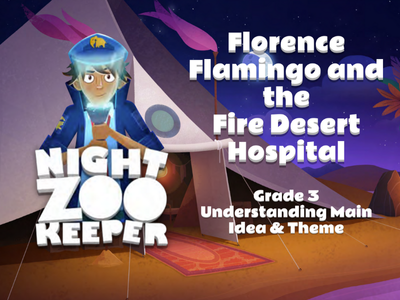
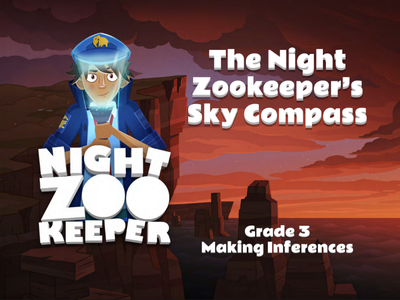
How Night Zookeeper can help
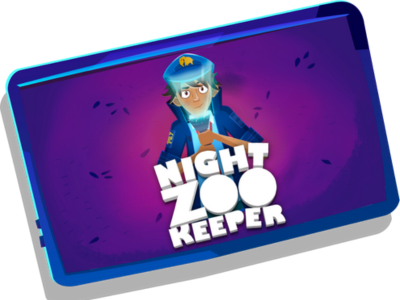
Night Zookeeper uses gamified learning to make reading & writing fantastically fun for children aged 6 to 12!
Our reading & writing program for kids can be used for homeschooling, or as a supplemental learning resource. There are thousands of award-winning activities available, including word games, reading comprehension challenges, interactive lessons, and practice worksheets for your child to fill in and learn.
Sign up today to get a 7-day FREE trial!
More resources
- Grade 4 Reading Comprehension
- Grade 3 Grammar
- Grade 3 Spelling Words
- Grade 3 Writing Activities
- Grade 3 Writing Prompts
- Reading Comprehension (overview)
Related Content


Make Reading & Writing Fantastically Fun!
- Award-winning reading & writing program for kids
- Improves spelling, grammar, punctuation & vocabulary
- Over 1,000 different learning games and activities



